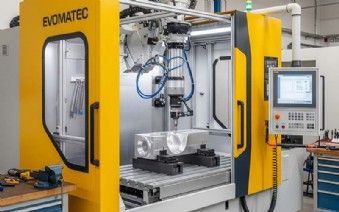-

Company
Product
ALUMINIUM MACHINES
PORTABLE MITER SAWS FOR ALUMINUM
PORTABLE COPY ROUTER MACHINES FOR ALUMINIUM
PORTABLE END MILLING MACHINES FOR ALUMINIUM
AUTOMATIC MITER SAWS FOR ALUMINIUM
COPY ROUTER MACHINES FOR ALUMINIUM
END MILLING MACHINES FOR ALUMINIUM
ALUMINUM CORNER CRIMPING MACHINE
DOUBLE MITRE SAWS FOR ALUMINIUM
AUTOMATIC SAWS FOR ALUMINIUM
BAR PROCESSING CENTERS
MACHINING CENTERS FOR ALUMINIUM COMPOSITE PANELS
NOTCHING SAWS
WEDGE CUTTING SAWS AND NOTCH CUTTING SAWS
MITER SAWS FOR ALUMINIUM
PVC PLASTIC MACHINES
PORTABLE MITER SAWS FOR PLASTIC
PORTABLE COPY ROUTER MACHINES FOR PLASTIC
PORTABLE END MILLING MACHINES FOR PLASTIC
MITER SAWS FOR PLASTIC
COPY ROUTERS FOR PLASTIC
END MILLING MACHINES FOR PLASTIC
WELDING MACHINES FOR PLASTIC
CORNER CLEANING MACHINES FOR PLASTIC PROFILES
DOUBLE MITRE SAWS FOR PLASTIC
BAR PROCESSING CENTERS
GLAZING BEAD SAWS
AUTOMATIC MITRE SAWS FOR PLASTIC
METAL MACHINES
MANUAL METAL SHEET BENDING MACHINE
MANUAL BENDING MACHINES
HYDRAULIC BENDING MACHINES
NON MANDREL BENDERS
PLATE BENDING MACHINES
BORDERING AND TRIMMING MACHINES
HORIZONTAL PRESSES
BELT GRINDING MACHINES
PIPE NOTCHING MACHINES
PIPE POLISHING MACHINES
LASER CUTTING MACHINES
PRESS BRAKES
VERTICAL TURNING CENTERS
MACHINING CENTERS
WOOD MACHINES
GLASS MACHINES
ROBOTICS SPECIAL MACHINERY
Service
Blog
Contact
Blog
- Home
- Blog
- BAR MACHINING CENTERS
- ALUMINIUM MACHINING CENTER
ALUMINIUM MACHINING CENTER

What is an Aluminium Machining Center? – Structure and Functionality
Introduction
Aluminium profiles have become indispensable in industries such as window manufacturing, door production, façade construction, mechanical engineering, and the automotive sector. To perform complex processes such as milling, drilling, cutting, thread tapping, and copy milling efficiently, precisely, and automatically, companies rely on aluminium machining centers. These CNC-controlled machines combine different processing steps into one system, thereby increasing not only productivity but also the quality of the finished products.
Structure of an Aluminium Machining Center
A typical CNC machining center for aluminium consists of several main components:
-
Machine bed and axis system
-
Depending on the model, the machine works with 3 axes, 4 axes, or 5 axes.
-
Servo- or NC-controlled axes allow the machining of profiles at different angles and levels.
-
-
Tool changer
-
Modern machining centers feature automatic tool magazines, which can switch milling cutters, drills, or saw blades in seconds.
-
Typical tools include PCD tools, carbide cutters, and high-performance drills.
-
-
Spindle and drive
-
High spindle speeds enable precise machining of even hard aluminium profiles.
-
-
Clamping systems
-
Profiles are fixed with pneumatic or hydraulic clamps to ensure vibration-free and highly accurate machining.
-
Functionality
An aluminium machining center works based on a CNC program (Computerized Numerical Control). This program is usually generated from CAD/CAM data and defines exactly how the workpiece will be machined.
-
Loading the profile – The aluminium profile is clamped onto the machine table.
-
Program start – The CNC control starts the predefined machining program.
-
Automatic machining – Cutting, drilling, milling, grooving, thread tapping, or copy milling take place automatically.
-
Finished part – After machining, the profile is released and can be assembled or installed directly.
Advantages of Aluminium Machining Centers
-
High precision: Minimal tolerances thanks to CNC control.
-
Time savings: Multiple machining steps in one single machine.
-
Flexibility: Different profile sizes and machining types are possible.
-
Cost reduction: Less waste and optimized production times.
-
Industry 4.0 ready: Modern systems can be networked and linked with CAD software.
Typical Applications
-
Windows & doors – machining of lock cases, handles, and fixing points.
-
Façade construction – processing of long aluminium profiles for glass façades.
-
Mechanical engineering – production of frames, guides, and special profiles.
-
Automotive & aerospace – precision parts made from aluminium profiles.
Conclusion
An aluminium machining center represents the future of modern aluminium profile processing. It combines maximum precision, speed, and automation in a single system. Whether in window manufacturing, door production, or façade construction, a CNC machining center makes companies more competitive and ensures efficient production processes.
- 3 axis NC machining center
- Compact aluminium machining center
- Copy milling machine aluminium
- CNC machining center aluminium profiles
- Machining of aluminium profiles
- Milling of aluminium profiles
- Machine for aluminium profiles
- Aluminium profile CNC machining
- Milling aluminium windows
- Milling aluminium doors
- Specialised machines aluminium machining
- Aluminium machining center
- EVOMATEC machines
- Machines for aluminium profiles
- Machining center for profiles
- Machining of aluminium window profiles
- CNC machining aluminium profiles
 GERMANY
GERMANY ENGLISH
ENGLISH FRANCE
FRANCE SPAIN
SPAIN PORTUGAL
PORTUGAL








